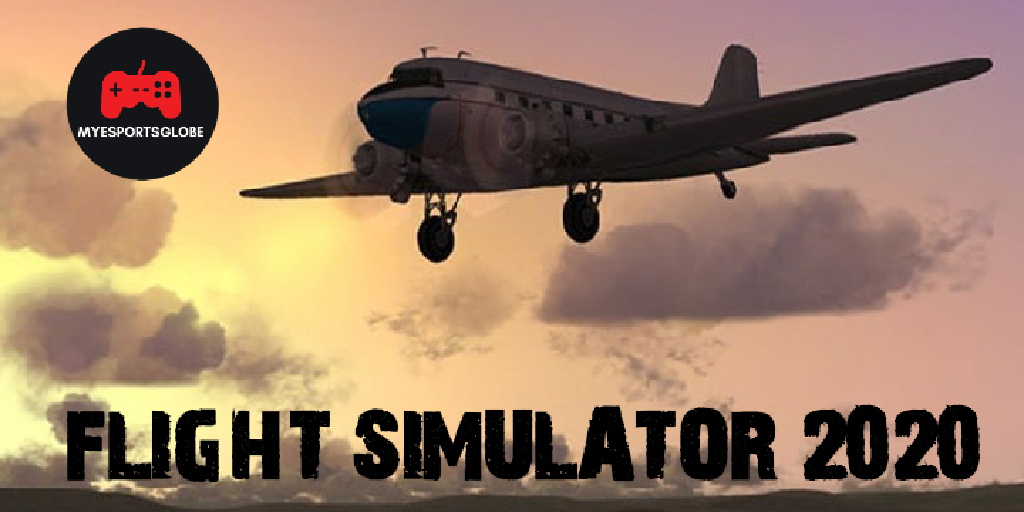Microsoft Flight Simulator (often abbreviated as MSFS or FS) is a series of amateur flight simulator programs for Microsoft Windows operating systems, and earlier for MS-DOS and Classic Mac OS. It is one of the longest-running, best-known, and most comprehensive home flight simulator programs on the market. It was an early product in the Microsoft application portfolio and differed significantly from Microsoft’s other software, which was largely business-oriented. At 37 years old, it is the longest-running software product line for Microsoft, predating Windows by three years. Microsoft Flight Simulator may be the longest-running PC game series of all time.
Microsoft Flight Simulator 2020 is a flight simulator developed by Asobo Studio and published by Xbox Game Studios for Microsoft Windows and Xbox Series X. It was released on August 18, 2020 for Microsoft Windows. It is the eleventh major entry in the Microsoft Flight Simulator series, preceded by Flight Simulator X.
Flight Simulator simulates the entire Earth using textures and topographical data from Bing Maps. Three-dimensional representations of the world’s features, such as terrain, trees, grass, buildings, and water are generated by Microsoft Azure technology. Through the use of the Azure cloud to render visuals, enhance visual fidelity, and simulate real-world data and effects, as well as calculate physics, the title has been viewed as the culmination of Microsoft’s “power of the cloud” mantra. Some players received the Alpha version as part of the game’s Insider program. On July 13, 2020, Microsoft opened up pre orders, and the PC version became available on August 18, 2020.
Game Overview –
Flight Simulator uses Asobo’s in-house developed game engine, and leverage Bing Maps data, accessing over two petabytes of data from the cloud on demand. Azure AI analyzes map data and photogrammetry to generate photorealistic 3D models of buildings, trees, terrain, and so on. This allows the simulator to depict most parts of the world in 3D photorealism, and other parts in high definition. The game’s engine utilizes satellite imagery or fly-by image scans as the basis for height and terrain texture data.
An offline procedural generation AI then reads these textures based on their own parameters and properly populates terrain with materials, roads, buildings, bushes, trees and more based on brush set assets the developers have made. Afterwards, artists can further go in and embellish specific locations with even more detail with photogrammetrically captured materials and textures. Flight Simulator features multiple terabytes of texture and height map data. Using a base mesh and textures, the game uses the Internet connection to stream even higher quality terrain data onto the PC or console through the Azure cloud as the player plays, boosting the game’s fidelity and graphical diversity.
Asobo has created their own flight model engine, allowing thousands of surfaces and 3D forces and moments to be fully simulated. There are also realistic physics and weather systems, and utilization of real-world weather data. An example used at E3 2019 was that if it was raining somewhere in real life, it would be raining in-game. Individual clouds will have their own behaviors and they will impact aircraft performance depending on its location within the system. Flight Simulator features a 600 kilometre draw distance and allows the player to see storms hundreds of miles away, with lightning cracking inside of clouds.
Through cloud-based technology, Flight Simulator streams data to the computer or console in real time, with AI being utilized to extrapolate geometry from a blend of satellite and flyover imagery. Flight Simulator converts 3D scans of the environment into the game world. Other sources of data include terrain data for landscaping, data for foliage density, real-time meteorological data, and air traffic updates. A separate atmospheric renderer simulates accurate humidity and pollution.
Microsoft has stated that the player’s aircraft will feel air as it lifts, drags, or slides as they come in contact with it, accounting for ice on the wings, pollution particles, or how wind moves through buildings or across tree tops, as well as friction of rubber to asphalt when the aircraft touches down, with the aircraft responding accurately to each of these instances.
Skyscrapers will cast shadows over each other that darken as the player reaches street level and cities will disperse light at night that radiates the sky. Cloud technology is also used to calculate things such as the way air flows around natural structures such as mountains to cause pockets of turbulence, or stream in air traffic, time of day and weather from the real world. In regards to foliage, the game will geometrically render individual blades of grass and seas will also contain waves created by the wind.
Flight simulators will populate the world with animals and roads with vehicles, water will flow realistically based on wind direction, grass will have individual grass blades and trees will have individual leaves, creating the illusion of a living world. The game world will include over 2 million cities and towns, 1.5 billion buildings, 2 trillion trees, and 37,000 real-world airports. In regards to runways, dedicated tools allow Asobo to outline the site perimeter, runway footprint, orientation, as well as other properties.
This approach also allows Microsoft to flag artifacts and visual anomalies from a birds-eye view, clearing up the input for a world-building algorithm. The result is fed into Microsoft’s artificial intelligence, stringing the environment together in the cloud, and is streamed to the PC or console in real-time. Flight Simulator features various animal species that can even be viewed at ground level, including birds, elephants, giraffes and bears.
History –
Microsoft Flight Simulator began as a set of articles written by Bruce Artwick in 1976 about a 3D computer graphics program. When the magazine editor said that subscribers wanted to buy the program, Artwick set to work to create it and incorporated a company called subLOGIC Corporation in 1977. The company began selling flight simulators for several computer platforms, including the 8080, Altair 8800, and IMSAI 8080. In 1979 subLOGIC released FS1 Flight Simulator for the Apple II. In 1980, subLOGIC released a version for the TRS-80, and in 1982 they licensed an IBM PC version with CGA graphics to Microsoft, which was released as Microsoft Flight Simulator 1.00.
It was unusual in that it was not an application program requiring an operating system, but contained its own operating system, which displaced the installed one as long as the program was running. In the early days of less-than-100% IBM PC compatible systems, Flight Simulator and Lotus 1-2-3 were used as unofficial compatibility test software for new PC clone models.
Game Development –
Flight Simulator was announced on June 9, 2019. It is the first major entry in the series since 2006’s Flight Simulator X, following a long period of uncertainty over the future of the series after the closure of Aces Game Studio in 2009. It was developed by the French Asobo Studio and published by Xbox Game Studios. The game was released on August 18, 2020.The game was powered by ACE (Asobo Conception Engine).
Six years prior to release, the foundations for Flight Simulator began through work with Asobo on a product called HoloTour for Microsoft’s HoloLens augmented reality headset. A challenge that later inspired the Flight Simulator project was to build a digital version of Machu Picchu’s vast mountainside and vistas vs. normal buildings at street level. This challenge spurred Microsoft executive and project leader Jörg Neumann to consult with the Bing Maps team to use their detailed photogrammetry data, which included the actual ruins of Machu Picchu, in order to create a HoloLens replica of Machu Picchu.
Neumann later utilized Bing photogrammetry data to have Asobo build a flight demo for the city of Seattle. Neumann also traveled to Switzerland to meet with weather researchers and aficionado in regards to incorporating their models and data into the product. Technology was also incorporated from Microsoft’s discontinued Photosynth project, which generates 3D models from 2D photos.
Launch of Game –
On July 13, 2020, Microsoft opened up pre orders, and announced that Flight Simulator for PC would be available on August 18, 2020. The company announced three different versions of the title — Standard, Deluxe, and Premium Deluxe, each providing an incremental set of airplanes to choose and additional airports with more detailed visuals. The pricing ranged from US $59.99 for Standard, to US $89.99 for Deluxe, and US $119.99 for the Premium Deluxe edition. While it is released on the PC, the date for launch on the Xbox family of consoles is awaited.
Retail Version of the Game –
Aerosoft, a German developer of simulation software, announced in July 2020 that they have a partnership with Microsoft to release a physical version in Europe. It is available in two editions, Standard and Premium Deluxe (see the features comparison below), and comes with 10 dual-layer DVDs and a printed manual. The Premium Deluxe edition also comes with an artbook. Otherwise, there is no difference between boxed retail and the version Microsoft sells directly.
However, the discs contain only the installer and the basic content (aircraft, default world etc.) that is around 90 GB and not playable out of the box; the actual simulator software and updates are downloaded during installation. An active internet connection is also needed for the simulator to update itself when needed. Additionally, more details for the world, better ground imagery, as well as weather and traffic data can optionally be streamed from Microsoft’s servers
Aircrafts –
Microsoft flight simulator has almost all big small and premium aircraft from all top companies. With most of them being of US, French, German origin, with a few coming from Austrian, Czech and Slovenian companies.
Third-party aircraft will also be supported within the simulator, being directly purchased from the in-game marketplace. Notable confirmed third party aircraft are the Concorde, developed by DC designs, as well as many other aircraft.
The Virtual Air Traffic Simulation Network, also known as Vatsim, and The International Virtual Aviation Organisation, also known as IVAO, are online flight-simulation networks confirmed to be supported within Microsoft Flight Simulator.
Airports –
Flight Simulator included around 37,000 manually edited airports from around the world based on real-world satellite images, of which 30, 35, or 40 are hand-crafted replicas of their real-world counterparts, depending on the edition.
Reception of the game –
Game development and graphics/visual effects industry publication 80 LEVEL described Flight Simulator as “one of the most authentic-looking landscape 3D simulations ever in the history of video games,” and states that “Microsoft is not only changing the face of simulators and aerial simulation, but the way companies actually build games.”
Upon release, Microsoft Flight Simulator received “universal acclaim” on the review aggregator Metacritic based on 38 reviews and has been rated #2 Best PC Game of 2020, tied with Half-Life: Alyx. IGN’s Seth Macy praised the attention to detail and graphics, and while he criticised the long loading times, he found this unsurprising due to the game’s “staggering amount of data”. In summary, he called it “the most incredible experience I’ve ever had on a computer”.
To read more about your favourite games go to our website, MyEsportsGlobe.
If you haven’t yet then do follow MyEsportsGlobe on social handles to get regular updates –







